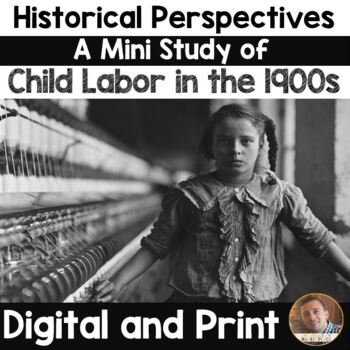Historical Perspectives -A Study of Child Labor in the 1900s
- PDF
- Google Apps™
- Easel Activity

What educators are saying
Also included in
- Teach social studies and reading together with Historical Perspectives. Historical Perspectives were made to make teaching social studies EASY! Each pack includes everything you need to teach these important topics in history. Each pack teaches through a fiction and non-fiction text, as well as throPrice $60.00Original Price $212.25Save $152.25
Description
This mini Child Labor in the 1900s pack takes a look at labor in the early part of the 1900s for kids living in the USA. This Historical Perspectives pack explores Child Labor, through a fiction and non-fiction text, as well as through primary source photos and documents for grades 3-6.
The pack includes a print-ready pack for students, which you can print as a packet or as individual pages which you can spread out over a few days.
THE PASSAGES NOW INCLUDE AUDIO TEXT FILES FOR STUDENTS!!
Included are the following:
- Fictional passage about Newsies and Child Labor in the 1900s.
- Non-Fiction passage about Child Labor in the 1900s.
- Questions to go along with each of the passages
- 5 Primary Sources
- An S-T-A page for each primary source
*What do you SEE?
*What do you THINK?
What questions would you ASK?
The print version includes the pages above, as well as the following:
- A K-W-P organizer to help students discuss what they KNOW, what they WANT to know, and what their PARTNERS know/want to know.
- There are also 18 DEEP DIVE questions for students to discuss after reading the passages about the topic. These questions can be used to deeply discuss the topic on a higher level. They can be used in multiple ways, but I suggest using them to have students ask a partner or small group. Each student can be assigned a question and then students can rotate around to have these deep conversations with one another.
This is also included in a DIGITAL format if you are teaching online. You will just click the link in the PDF download and it will give you immediate access to the Google Slides file with the same content.
I hope this pack helps you and your students explore this topic in an easy way.
Happy Teaching!
-Dan







